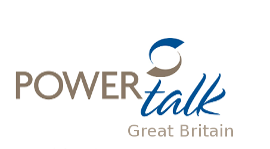PREM Committee at all levels
Positive feedback
Lessons in head table and flag Protocol
Learning parliamentary procedure and effective meeting procedures.
Training in platform presence
lots of opportunity to practise skills
Project tracking charts to measure progress
Progress at your own pace
Professionalism of the members
Tuesday 10 July 2012
Sunday 27 May 2012
Reading Aloud
If ever you are asked to read aloud there are three things you have to do:
The words only tell us what to say, the punctuation tells us how to say it. There should be a slight pause at the end of a sentence or when you encounter a comma. You might use a longer pause when you encounter a semicolon, colon or dash. If nothing else, pauses give you a chance to take a breath.
When you encounter quotation marks your tone of voice should indicate the change from narrative to quotation.
In normal speech we tend to use an upward inflection at the end of a sentence when we ask a question. So if you encounter a question mark you should inflect your voice in the same way (note: in some dialects of English an upward inflection is part of normal speech).
An exclamation mark is the most obvious indicator that emphasis should be applied but if you read between the lines and try to imagine how it should be said. Which parts should be louder or softer? How can your tone of voice replicate the tone of the piece you are reading?
When reading poetry you have to capture the rhythm of the poem but prose can have rhythms as well. Modulate your voice and avoid monotone. Your audience will appreciate it.
- Read the words
- Read the punctuation
- Read between the lines.
The words only tell us what to say, the punctuation tells us how to say it. There should be a slight pause at the end of a sentence or when you encounter a comma. You might use a longer pause when you encounter a semicolon, colon or dash. If nothing else, pauses give you a chance to take a breath.
When you encounter quotation marks your tone of voice should indicate the change from narrative to quotation.
In normal speech we tend to use an upward inflection at the end of a sentence when we ask a question. So if you encounter a question mark you should inflect your voice in the same way (note: in some dialects of English an upward inflection is part of normal speech).
An exclamation mark is the most obvious indicator that emphasis should be applied but if you read between the lines and try to imagine how it should be said. Which parts should be louder or softer? How can your tone of voice replicate the tone of the piece you are reading?
When reading poetry you have to capture the rhythm of the poem but prose can have rhythms as well. Modulate your voice and avoid monotone. Your audience will appreciate it.
Tuesday 13 March 2012
Presentations: Best Practice
Last night I was at a meeting of a professional body. The speaker gave a presentation using an overhead projector linked to a PC.
The speaker was clearly confident in giving presentations to his peer group. The overheads were mainly black text on white. He proceeded at a rapid pace. One overhead might have a heading and a line of text, the next another point under the same heading.
Half way through the presentation he said "You don't need to take notes, the slides will be available on the website".
At one point he looked at the screen and said "I didn't mean to concentrate so much on ***".
After the meeting, I heard a few people say "A lot of that went straight over my head".
What do you think the speaker could have done to improve the presentation?
The speaker was clearly confident in giving presentations to his peer group. The overheads were mainly black text on white. He proceeded at a rapid pace. One overhead might have a heading and a line of text, the next another point under the same heading.
Half way through the presentation he said "You don't need to take notes, the slides will be available on the website".
At one point he looked at the screen and said "I didn't mean to concentrate so much on ***".
After the meeting, I heard a few people say "A lot of that went straight over my head".
What do you think the speaker could have done to improve the presentation?
Subscribe to:
Posts (Atom)

